Different Types of Water Damage and How They Affect Buildings Structer
In homes and buildings, water damage is an insidious threat that can wreak havoc on structural integrity and the overall well-being of occupants. Understanding the various types of water damage and their potential impact is crucial for homeowners and property managers alike. From seemingly harmless leaks to disastrous floods, water damage can take on different forms, each with its unique set of challenges and consequences.
In this blog post, we will delve into the three primary categories of water damage—clean water, gray water, and black water—and explore the distinct structural impacts associated with each. While clean water damage may appear less concerning, it can still lead to significant issues if left unaddressed. Gray water, slightly contaminated with impurities, can pose health risks and compromise structures. Lastly, black water, laden with dangerous contaminants, demands immediate professional attention.
By gaining insights into the types of water damage and their repercussions, you’ll be better equipped to safeguard your property and take timely action when faced with water-related challenges.
Structural Impact of Clean Water Damage:
Water damage is a pervasive and often underestimated threat to the integrity of residential and commercial structures. Understanding the nuances of different water damage categories is not just informative; it’s essential for protecting your property and ensuring the safety of occupants. This blog post aims to shed light on the three primary types of water damage – clean water, gray water, and black water – and how they can impact the structural stability and habitability of your space.
While clean water damage may appear innocuous, it can seep into walls, floors, and ceilings, causing hidden structural issues and fostering mold growth. Gray water, slightly contaminated by household sources like sinks and showers, can lead to odors, material deterioration, and health concerns if not managed properly. On the other end of the spectrum, black water, containing hazardous sewage or floodwater, poses immediate threats to both structures and health.
By grasping the distinctions between these water damage categories, you’ll be better equipped to respond swiftly and effectively when water damage strikes. This knowledge can potentially save you from costly repairs, health hazards, and the inconvenience of displaced occupants.
Gray Water Damage and Structural Consequences:
Water damage is a pervasive and often underestimated threat to the integrity of residential and commercial structures. Understanding the nuances of different water damage categories is not just informative; it’s essential for protecting your property and ensuring the safety of occupants. This blog post aims to shed light on the three primary types of water damage – clean water, gray water, and black water – and how they can impact the structural stability and habitability of your space.
While clean water damage may appear innocuous, it can seep into walls, floors, and ceilings, causing hidden structural issues and fostering mold growth. Gray water, slightly contaminated by household sources like sinks and showers, can lead to odors, material deterioration, and health concerns if not managed properly. On the other end of the spectrum, black water, containing hazardous sewage or floodwater, poses immediate threats to both structures and health.
By grasping the distinctions between these water damage categories, you’ll be better equipped to respond swiftly and effectively when water damage strikes. This knowledge can potentially save you from costly repairs, health hazards, and the inconvenience of displaced occupants. So, read on to explore the impact of these water damage types and learn how to protect your property and loved ones.
Water Damage Categories:
Understanding water damage starts with recognizing the categories it falls into. The three main categories are:
Clean Water Damage: Clean water damage, often called Category 1, is the least severe type. It originates from sources like broken pipes, overflowing sinks, or rainwater leaks. While it may seem harmless, clean water can seep into building materials, leading to structural problems if left unattended. Additionally, even clean water damage can provide the ideal conditions for mold growth if not dried properly.
Gray Water Damage: Gray water, Category 2, contains slight contaminants and usually stems from sources like washing machines, dishwashers, or shower drains. Gray water can cause odors, material deterioration, and pose health concerns due to the presence of microorganisms. Proper cleanup and disinfection are vital when dealing with gray water damage to prevent these issues from escalating.
Black Water Damage: Black water, or Category 3, is the most hazardous type of water damage. It includes water contaminated with sewage, chemicals, or floodwater from natural disasters. Black water damage poses immediate health risks and severe structural damage. In such cases, it’s imperative to seek professional assistance promptly to mitigate the damage and ensure safety.
Structural Impact of Clean Water Damage:
Clean water damage may seem less alarming, but it can have a significant impact on a structure:
- Weakened Materials: Prolonged exposure to clean water can weaken materials such as drywall, insulation, and wooden components. This weakening can compromise the structural integrity of your property over time.
- Mold Growth: Even if the water is clean, it can create the ideal environment for mold to thrive. Mold can spread rapidly in damp conditions, leading to health concerns and additional structural problems.
It’s important not to underestimate the potential consequences of seemingly benign clean water damage. Timely action is crucial to prevent these issues from escalating.
Gray Water Damage and Structural Consequences:
Gray water damage, while containing some contaminants, can still have a notable impact on structures:
- Material Deterioration: Materials like drywall, carpeting, and upholstery can deteriorate when exposed to gray water, leading to the need for replacement.
- Health Concerns: The presence of microorganisms in gray water can pose health risks, especially if not properly cleaned and disinfected. Skin irritations, allergies, and respiratory problems are common health issues associated with gray water exposure.
Handling gray water damage requires thorough cleaning and disinfection to prevent these consequences.
Black Water Damage:
Black water damage is the most severe category, and its impacts are significant:
- Immediate Health Hazards: Black water is highly contaminated and can contain pathogens, bacteria, and toxins that pose severe health risks to occupants. Exposure can lead to gastrointestinal illnesses, skin infections, and respiratory problems.
- Structural Devastation: Black water can cause extensive structural damage, including rotting wood, corrosion of metal components, and deterioration of concrete. Immediate and professional intervention is essential to mitigate these effects.
In the case of black water damage, it is crucial to prioritize safety and enlist the expertise of professionals who specialize in handling hazardous materials.
Hidden Structural Damage:
Water damage can extend beyond what meets the eye. Hidden structural damage can be just as destructive:
- Subfloors and Insulation: Water can penetrate subfloors and insulation, leading to rot and compromised insulation effectiveness.
- Wall Cavities: Water can infiltrate wall cavities, causing structural issues and promoting mold growth.
These hidden consequences emphasize the importance of comprehensive inspections and thorough remediation when dealing with water damage.
Long-term Consequences:
Ignoring water damage or failing to address it adequately can result in long-term consequences:
- Rotting Wood: Water-damaged wood can rot over time, leading to structural instability.
- Corrosion: Metal components, such as pipes and support beams, can corrode when exposed to water, compromising their strength.
- Costly Repairs: Neglecting water damage can lead to more extensive and costly repairs in the future.
The long-term repercussions of water damage underscore the importance of addressing it promptly and effectively.
Preventive Measures and Conclusion:
Preventing water damage is the best approach. Consider these preventive measures:
- Regular Maintenance: Maintain your plumbing, roof, and drainage systems to prevent leaks and water intrusion.
- Proper Insulation: Adequate insulation can protect against water damage by preventing condensation and temperature-related issues.
- Immediate Response: Act swiftly if you discover any water damage to minimize its impact.
Conclusion:
In conclusion, water damage is a formidable adversary that can silently undermine the structural integrity and safety of your home or building. Recognizing the various categories of water damage, from the seemingly innocuous clean water to the hazardous black water, is paramount for taking the right course of action when disaster strikes.
Clean water damage, despite its innocuous appearance, can weaken materials and foster mold growth. Gray water damage, containing contaminants, can lead to material deterioration and health concerns if not handled properly. On the other hand, black water damage presents immediate health risks and severe structural devastation, necessitating swift professional intervention.
Additionally, it’s crucial to acknowledge the potential for hidden structural damage and the long-term consequences of untreated water damage, including rotting wood, corrosion, and costly repairs.
To protect your property and loved ones, prioritize preventive measures like regular maintenance, proper insulation, and swift responses to water damage incidents. Remember, water damage can escalate rapidly, and professional assistance is often indispensable to mitigate its impact and ensure a safe, structurally sound environment.
By staying informed and proactive, you can minimize the risks associated with water damage and preserve the longevity of your property. Don’t underestimate the importance of understanding water damage and the critical role it plays in maintaining the integrity and safety of your space.

